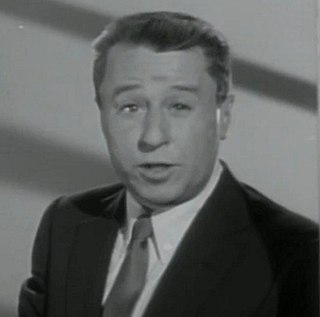
George Leslie Goebel was an American humorist, actor, and comedian. He was best known as the star of his own weekly comedy variety television series, The George Gobel Show, on NBC from 1954 to 1959 and on CBS from 1959 to 1960. He was also a familiar panelist on the NBC game show Hollywood Squares.

With a Song in My Heart is a 1952 American biographical musical drama film that tells the story of actress and singer Jane Froman, who was crippled by an airplane crash on February 22, 1943, when the Boeing 314 Pan American Clipper flying boat she was on suffered a crash landing in the Tagus River near Lisbon, Portugal. She entertained the troops in World War II despite having to walk with crutches. The film stars Susan Hayward, Rory Calhoun, David Wayne, Thelma Ritter, Robert Wagner, Helen Westcott, and Una Merkel. Froman herself supplied Hayward's singing voice.
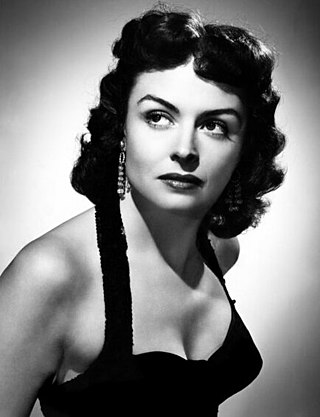
Donna Reed was an American actress. Her career spanned more than 40 years, with performances in more than 40 films. She is well known for her portrayal of Mary Hatch Bailey in Frank Capra's fantasy holiday film It's a Wonderful Life (1946). Reed won the Academy Award for Best Supporting Actress for Fred Zinnemann's war drama film From Here to Eternity (1953).

Victor John Mature was an American stage, film, and television actor who was a leading man in Hollywood during the 1940s and 1950s. His best known film roles include One Million B.C. (1940), My Darling Clementine (1946), Kiss of Death (1947), Samson and Delilah (1949), and The Robe (1953). He also appeared in many musicals opposite such stars as Rita Hayworth and Betty Grable.

Jerome Irving Wald was an American screenwriter and a producer of films and radio programs.

Diana Dors was an English actress and singer.

Dorothy Malone was an American actress. Her film career began in 1943, and in her early years, she played small roles, mainly in B-movies, with the exception of a supporting role in The Big Sleep (1946). After a decade, she changed her image, particularly after her role in Written on the Wind (1956), for which she won the Oscar for Best Supporting Actress.
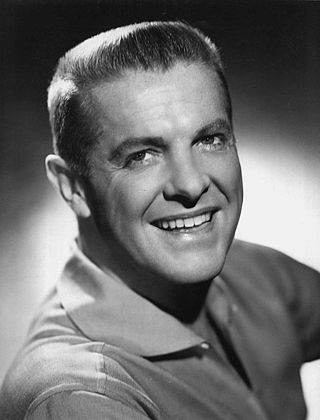
Charles Clarence Robert Orville Cummings was an American film and television actor who appeared in roles in comedy films such as The Devil and Miss Jones (1941) and Princess O'Rourke (1943), and in dramatic films, especially two of Alfred Hitchcock's thrillers, Saboteur (1942) and Dial M for Murder (1954). He received five Primetime Emmy Award nominations, and won the Primetime Emmy Award for Best Actor in a Single Performance in 1955. On February 8, 1960, he received two stars on the Hollywood Walk of Fame for his contributions to the motion picture and television industries, at 6816 Hollywood Boulevard and 1718 Vine Street. He used the stage name Robert Cummings from mid-1935 until the end of 1954 and was credited as Bob Cummings from 1955 until his death.

The Devil and Miss Jones is a 1941 American comedy film directed by Sam Wood and starring Jean Arthur, Robert Cummings, and Charles Coburn. Its plot follows a department store tycoon who goes undercover in one of his Manhattan shops to ferret union organizers, but instead becomes involved in the employees' personal lives.

Richard Egan was an American actor. After beginning his career in 1949, he subsequently won a Golden Globe Award for his performances in the films The Glory Brigade (1953) and The Kid from Left Field (1953). He went on to star in many films such as Underwater! (1955), Seven Cities of Gold (1955), The Revolt of Mamie Stover (1956), Love Me Tender (1956), Tension at Table Rock (1956), A Summer Place (1959), Esther and the King (1960) and The 300 Spartans (1962).
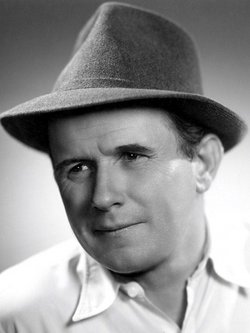
William Taylor "Tay" Garnett was an American film director and writer.

John Villiers Farrow, KGCHS was an Australian film director, producer, and screenwriter. Spending a considerable amount of his career in the United States, in 1942 he was nominated for the Academy Award for Best Director for Wake Island, and in 1957 he won the Academy Award for Best Adapted Screenplay for Around the World in Eighty Days. He had seven children by his wife, actress Maureen O'Sullivan, including actress Mia Farrow.

John George Agar Jr. was an American film and television actor. He is best known for starring alongside John Wayne in the films Sands of Iwo Jima, Fort Apache, and She Wore a Yellow Ribbon. In his later career he was the star of B movies, such as Tarantula!, The Mole People, The Brain from Planet Arous, Revenge of the Creature, Flesh and the Spur and Hand of Death. He was the first husband of Shirley Temple.
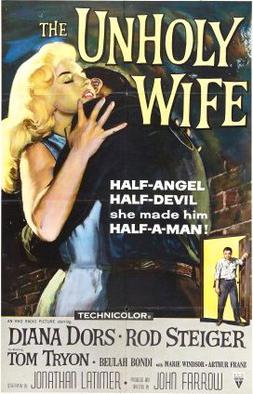
The Unholy Wife is a 1957 Technicolor film noir crime film produced and directed by John Farrow at RKO Radio Pictures, but released by Universal Pictures as RKO was in the process of ceasing its film activities. The film features Diana Dors, Rod Steiger, Tom Tryon and Beulah Bondi. The screenplay was written by William Durkee and Jonathan Latimer
Norman Krasna was an American screenwriter, playwright, producer, and film director who penned screwball comedies centered on a case of mistaken identity. Krasna directed three films during a forty-year career in Hollywood. He garnered four Academy Award screenwriting nominations, winning once for 1943's Princess O'Rourke, which he also directed.
Charles Schnee was a screenwriter and film producer. He wrote the scripts for the Westerns Red River (1948) and The Furies (1950), the social melodrama They Live by Night (1949), and the cynical Hollywood saga The Bad and the Beautiful (1952), for which he won an Academy Award.

Thunder in the East is a 1952 American war film released by Paramount Pictures, and directed by Charles Vidor. It was based on the 1948 novel The Rage of the Vulture by Alan Moorehead; the book title was the working title of the film.

The Ambassador's Daughter is a 1956 American romantic comedy film directed by Norman Krasna and starring Olivia de Havilland, John Forsythe and Myrna Loy. It was also produced and written by Krasna, and was distributed by United Artists. It was shot at the Joinville Studios in Paris. The film's sets were designed by the art director Léon Barsacq.
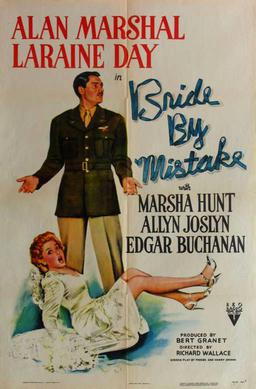
Bride by Mistake is a 1944 American romantic comedy film directed by Richard Wallace, and starring Alan Marshal and Laraine Day.

Flame of Araby is a 1951 American Technicolor adventure film directed by Charles Lamont starring Maureen O'Hara and Jeff Chandler. British film star Maxwell Reed made his American film debut in the picture. Locations were shot at three famous film locations: Vasquez Rocks, Bronson Canyon, and the Alabama Hills in Lone Pine, California.


















